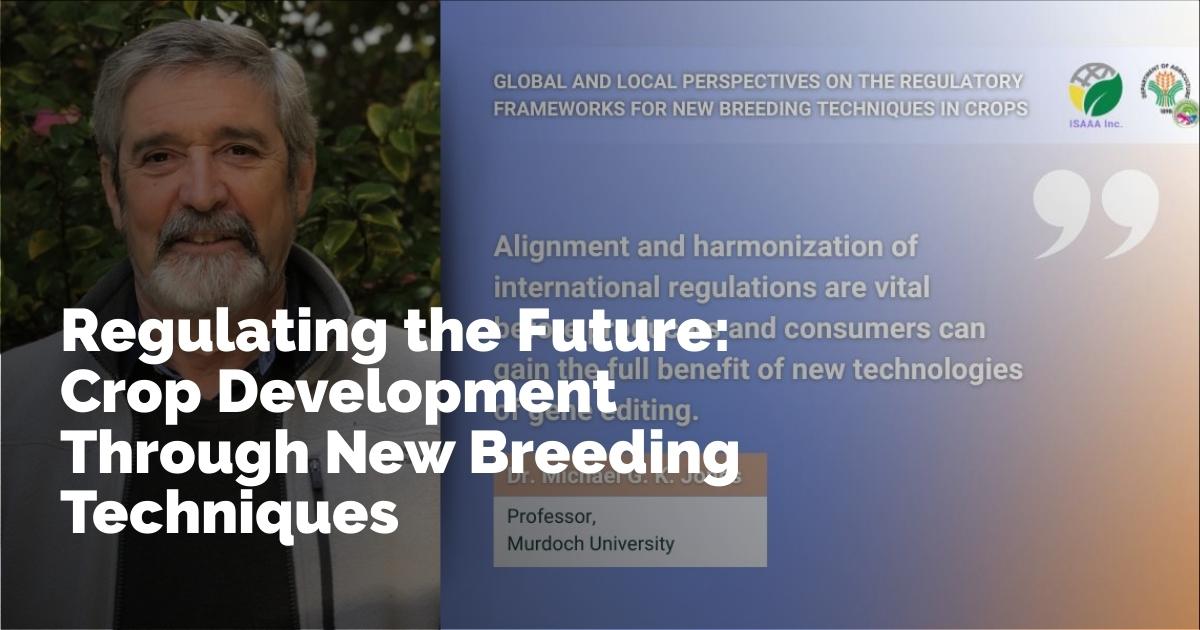Understanding Global Regulation of New Breeding Techniques
In recent years, modern biotechnology has revolutionized plant breeding, providing a faster and more precise method to develop crops compared to traditional techniques. These innovations are critical in tackling global challenges like food security, climate change, and sustainability. However, the regulatory landscape for crops developed through New Breeding Techniques (NBTs) varies significantly across the world. Some countries treat them like conventionally bred plants, while others impose stringent rules akin to those applied to genetically modified organisms (GMOs). This article explores the complex regulatory frameworks surrounding NBTs globally.
Defining New Breeding Techniques
New Breeding Techniques (NBTs) refer to a set of plant breeding innovations that incorporate advanced molecular, genomic, and cellular tools. These tools enable the targeted development of new crop varieties with specific desirable traits. According to Ma. Lorelie U. Agbagala, an Assistant Scientist at the Department of Science and Technology in the Philippines, NBTs involve a spectrum of methods that modify plant DNA to introduce these traits. As noted by Dr. Michael G. K. Jones, a professor at Murdoch University, the term NBTs is increasingly associated with genome-editing techniques, which may result in organisms that are or are not classified as GMOs. The distinction between GMOs and gene-edited products is crucial due to the regulatory differences between them.
Global Overview of NBT Regulations
The regulatory approach to NBTs differs markedly across regions. Dr. Jones highlights various pathways to deregulation in countries such as Australia, Japan, India, and China. In Australia, crops modified using Site-Directed Nucleases (SDN-1), which do not involve the introduction of transgenes, are not regulated as GMOs and are considered conventionally bred. Japan adopts a straightforward regulation system, where crops are not subject to GMO regulation if no externally processed nucleic acid is inserted and absent in the final product.
In contrast, India treats crops as conventionally bred if they involve SDN-1 and SDN-2 edits, provided no exogenous DNA is included. Similarly, in China, crops without externally processed nucleic acid do not fall under GMO regulations but still undergo various evaluations, including safety and crop variety registration.
In the Americas, countries like the United States, Canada, and several South American nations, including Argentina and Brazil, have established regulations for approving gene-edited plants. In Africa, countries such as Nigeria, Ghana, and South Africa are either developing or have implemented regulatory frameworks for gene-edited crops.
Trade in Gene-Edited Produce
The trade of gene-edited produce is gaining traction globally. In North America, both the USA and Canada have established trade processes for these products. Latin American nations such as Argentina and Brazil have also formulated gene editing trade agreements. In Europe, the European Union still regulates gene-edited produce as GMOs, while England has more lenient regulations.
The momentum extends to Asia, where trade agreements are emerging between Japan, the Philippines, and Thailand. Some African countries are in the process of establishing policies to regulate gene-editing. Dr. Jones emphasizes the importance of aligning and harmonizing international regulations to fully harness the benefits of gene editing technologies.
NBT Regulations in the Philippines
In the Philippines, the regulatory framework for NBTs is articulated through the National Committee on Biosafety of the Philippines (NCBP). The NBCP Resolution No. 1 classifies PBI products as either GMO or non-GMO, depending on the presence of novel genetic combinations facilitated by modern biotechnology. The 2021 Joint Department Circular further delineates the process for evaluating PBI products and determining their classification.
The Bureau of Plant Industry (BPI)'s Biotechnology Core Team assesses these products through a Technical Consultation for Evaluation and Determination (TCED) Group. Upon evaluation, products are classified as GMO if they contain novel genetic combinations, subjecting them to strict oversight under the 2021 Joint Department Circular. Non-GM products receive a Certificate of Non-Coverage.
Moving forward, the Philippines seeks to expand NBTs by building the capacities of regulators, scientists, and farmers. Educational initiatives for stakeholders and the public are crucial in fostering broader adoption of these technologies. The Bureau of Animal Industry, alongside the NCBP, is also working on regulatory frameworks for gene editing in animals and fish.
Webinar Insights on Regulatory Frameworks
The regulatory frameworks for new breeding techniques in crops were a primary focus during a webinar organized by ISAAA Inc., in collaboration with the Philippine Agriculture and Fisheries Biotechnology Program. The event attracted 310 participants, including policymakers, researchers, farmers, and general audiences, all keen on understanding the evolving landscape of biotechnology regulations.
A Global Perspective on NBTs
As the world navigates the complexities of adopting NBTs in agriculture, it is evident that regulatory frameworks must continue to evolve. Aligning international regulations will be pivotal in unlocking these technologies' full potential. By fostering innovative plant breeding methods, we can contribute to a more sustainable and resilient agricultural system that addresses future challenges, including climate change and food security.
출처 : Original Source

